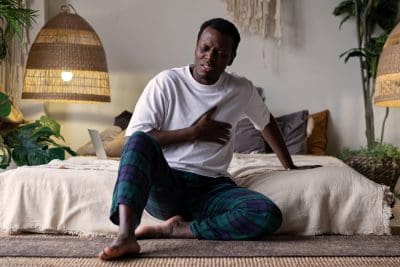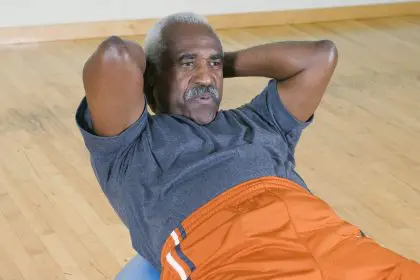When Mark Davidson walked into his doctor’s office for a routine checkup, he had no idea he was about to become part of a medical revelation. His blood pressure reading seemed unusually high, until his eagle-eyed nurse noticed something that would change everything – his arm position.
“She adjusted my arm from my lap to a supported position on the desk, and suddenly my numbers dropped significantly,” Davidson recalls. “It was like watching a sound engineer fine-tune an audio mix – one small adjustment made all the difference.”
The backstage pass to better readings
Dr. Tammy M. Brady at Johns Hopkins Medicine never expected her research to create such waves in the medical community. Her groundbreaking study, featuring 133 participants, played out like a carefully orchestrated concert where every position mattered.
“We discovered that arm position acts like a volume control for blood pressure readings,” Dr. Brady explains. “When arms rest unsupported in laps or hang freely, it’s like turning up the dial on a sound system – the numbers climb higher than they should.”
Hitting the high notes
The study’s results struck a chord with medical professionals worldwide. When participants’ arms rested on their laps, systolic pressure readings increased by roughly 4 millimeters of mercury (mmHg). But the real crescendo came when arms hung freely at their sides, sending readings soaring by 7 mmHg.
Dr. Maria Rodriguez, a cardiovascular specialist not involved in the study, puts these numbers in perspective: “In blood pressure management, a difference of 7 points can determine whether someone needs medication or not. It’s like the difference between acoustic and electric – same song, completely different sound.”
The rhythm section of health monitoring
Blood pressure has long played bass line in the symphony of health indicators. Dr. James Chen, a preventive medicine specialist, explains why accuracy matters so much: “High blood pressure orchestrates a variety of health complications, from heart disease to stroke. Getting the reading right is like making sure every instrument is perfectly tuned.”
When readings go off-key
Sarah Thompson learned this lesson the hard way. After months of taking blood pressure medication prescribed based on high readings, she discovered her numbers had been skewed by incorrect arm positioning during checks.
“I was literally paying for medicine I didn’t need because no one had taught me the proper way to position my arm,” Thompson shares. “It’s like being told you’re tone-deaf when actually someone just handed you an out-of-tune guitar.”
The perfect setup
Creating ideal conditions for blood pressure readings requires attention to detail that would impress any sound engineer. Dr. Brady recommends a setup worthy of a platinum record:
A chair with proper back support becomes your recording booth. The table height must align perfectly with your heart, creating acoustic perfection for blood flow measurement. Your feet should rest flat on the floor, like a drummer finding their groove.
Training the technicians
Just as musicians need proper training to master their instruments, healthcare providers require specific education in blood pressure measurement techniques. Dr. Robert Wilson, a medical education specialist, emphasizes this point: “We’re pushing for standardized certification in blood pressure measurement. It’s like requiring sound engineers to be properly trained before letting them near a mixing board.”
The scientific sound check
The physics behind arm position’s impact reads like advanced music theory. Dr. Lisa Martinez, a vascular specialist, explains: “Gravity affects blood flow like reverb affects sound. When your arm hangs down or rests too low, it creates pressure variations that distort the reading.”
Beyond the basics
Modern blood pressure monitoring has evolved beyond the simple arm cuff, much like music has progressed beyond basic acoustic instruments. Dr. Thomas Chang studies advanced monitoring techniques: “We now have 24-hour monitors and smart devices, but proper positioning remains crucial. It’s like having the most advanced recording equipment but still needing to position the microphone correctly.”
The home recording studio
Many patients monitor blood pressure at home, creating another venue where proper technique matters. Nurse practitioner Amanda Foster teaches patients the right moves: “Think of it as setting up your home studio. You need the right equipment, proper positioning, and consistent technique to get reliable readings.”
The ensemble effect
Blood pressure management often requires a team approach. Dr. Michael Lee coordinates with various specialists: “We’re like a band where every member plays their part. The primary care physician might be lead guitar, but we need cardiologists, nutritionists, and other specialists in perfect harmony.”
Encore: implementing change
Healthcare facilities nationwide are revamping their blood pressure checking protocols. Dr. Rachel Green oversees such changes at her clinic: “We’ve redesigned our exam rooms to ensure proper arm support, trained our staff extensively, and educated patients. It’s like upgrading an entire recording studio.”
The future soundtrack
Research continues into factors affecting blood pressure measurement accuracy. Dr. Brady’s team explores new variables: “Temperature, time of day, recent activity – they all influence readings like different aspects of sound production affect recording quality.”
Your personal performance
For patients, understanding proper positioning empowers better health monitoring. Just as musicians know their best angles on stage, knowing how to position your arm for blood pressure checks ensures accuracy when it matters most.
The final mix
As medical science fine-tunes its understanding of blood pressure measurement, one thing remains clear: position matters. Whether you’re a healthcare provider or patient, treating each blood pressure check like a carefully planned performance helps ensure accurate readings and better health outcomes.












